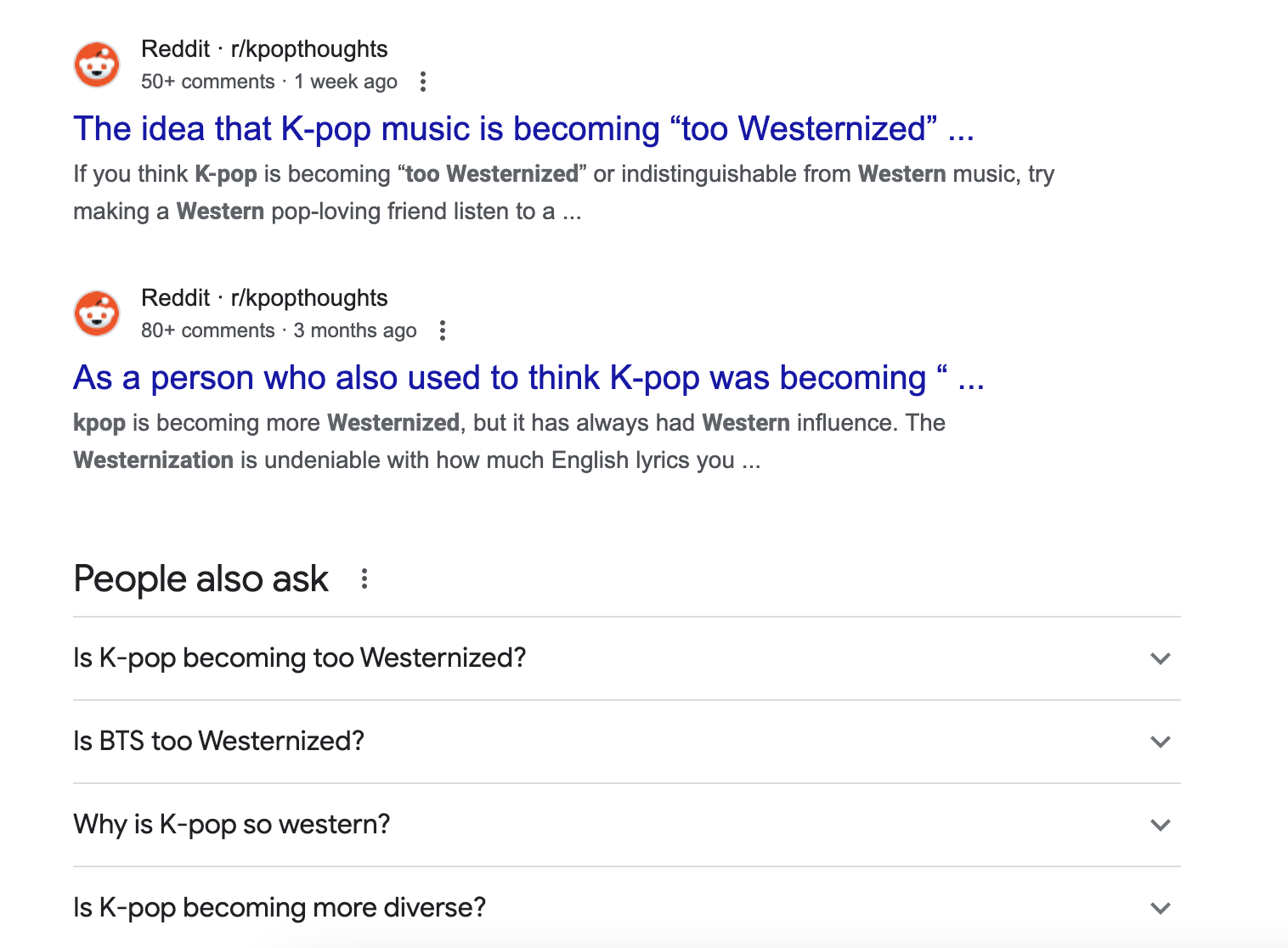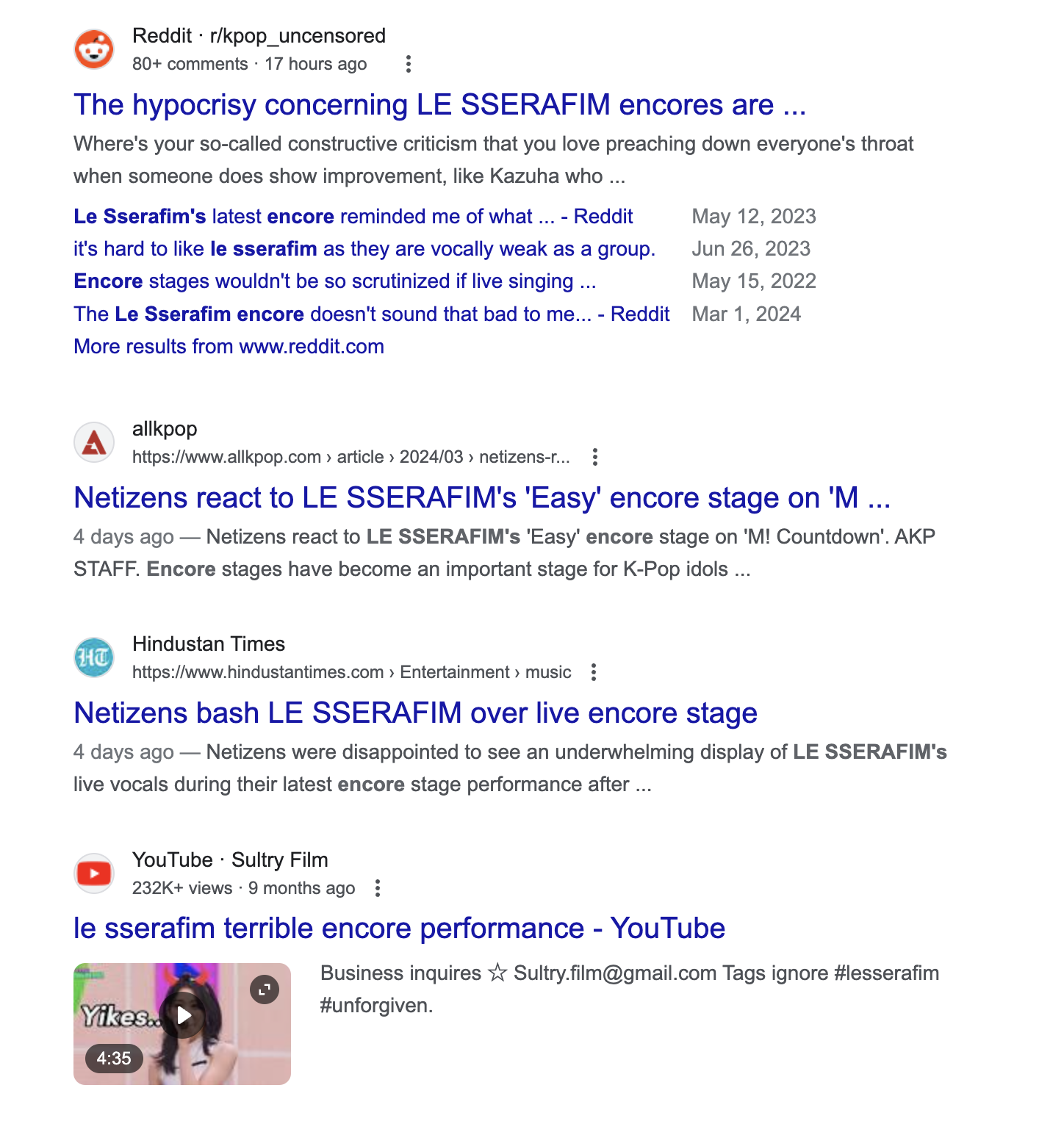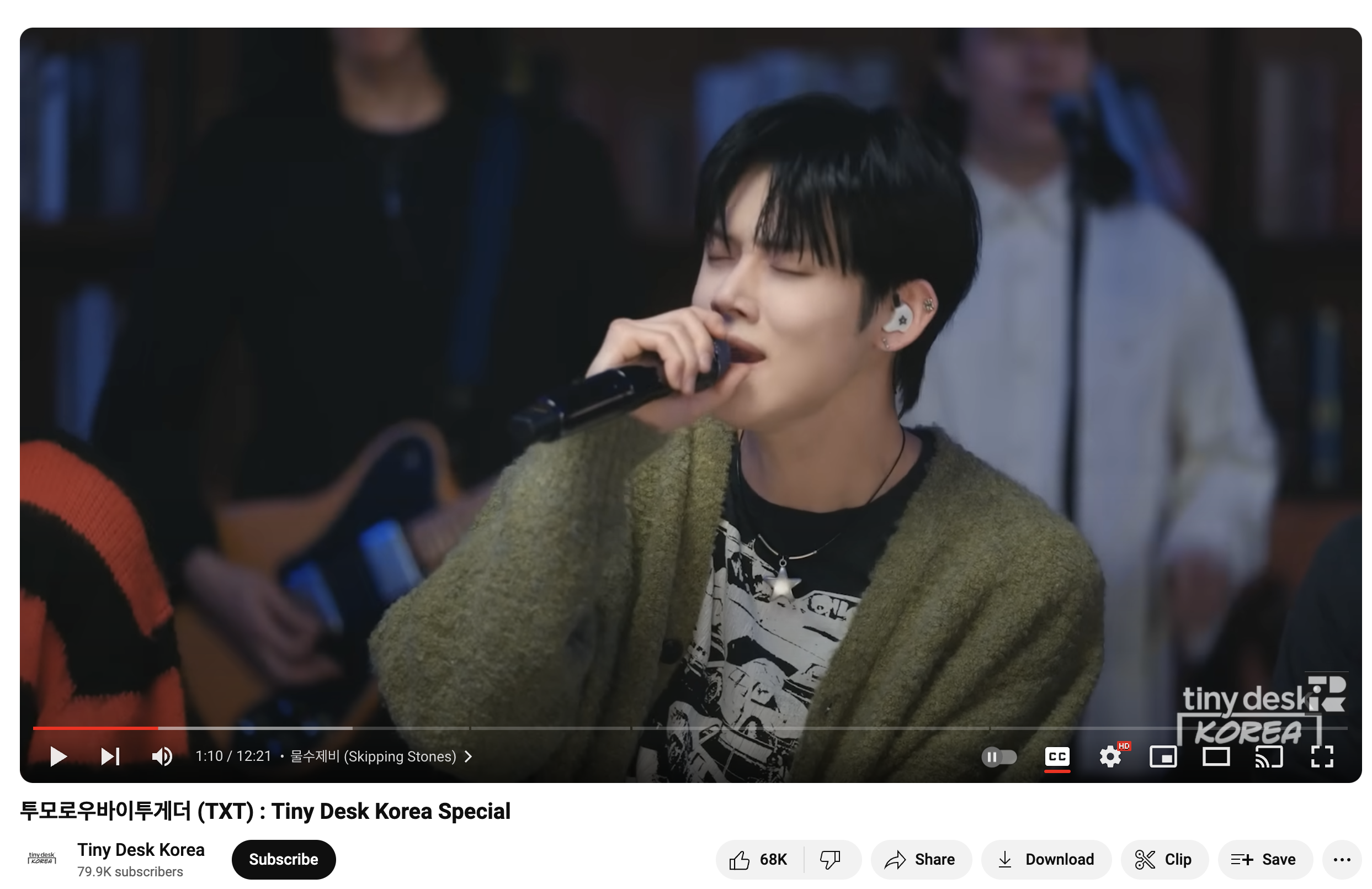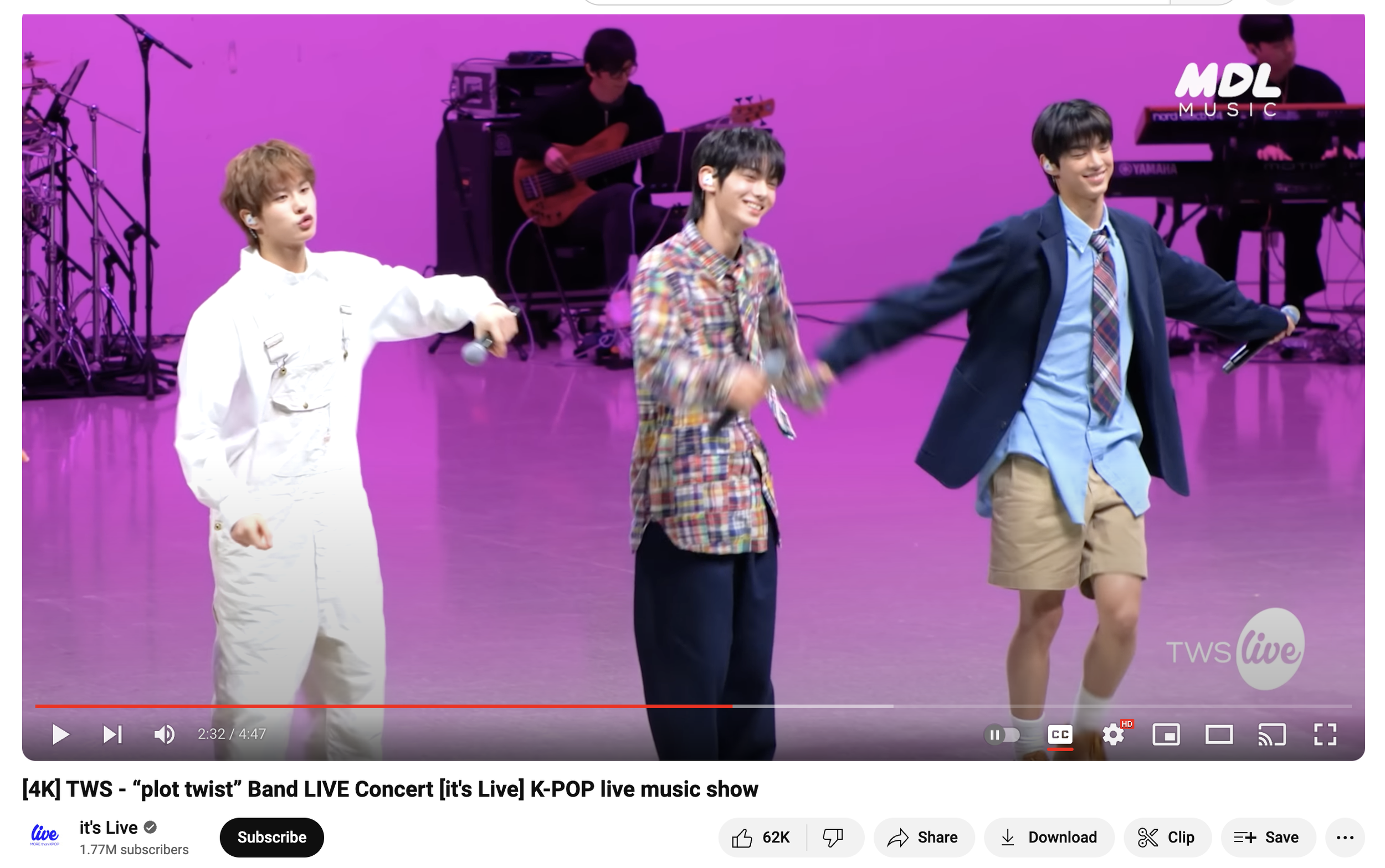The “Jopping” Faultline
I’ve noticed a couple of on-going K-Pop stan arguments bubble up to the surface again this week.
“I don’t understand why stans are complaining that K-Pop is too westernized now when K-Pop has always been western.”
“I don’t understand why stans are coming for [idol with terrible live vocal performance in an encore] because (circle one) singing live is hard, there were audio problems, and/or, no your fave sucks and this performance was good, actually.”
The common thread is the K-Pop kayfabe. K-Pop stans today are strongly encouraged to believe that they’re music industry experts. They’re fed streaming and sales performance metrics as part of the comeback promotional cycle and bicker over things like whose fave has the most credits with the Korea Music Copyright Association. “Making of” footage shows idols pushing buttons in the studio. New channels have popped up offering performances that strongly imply a raw or live vocal from idols but instead serve up vocals so heavily sweetened and processed they may as well be AI generated.
With all of that marketing pressure, I understand why there is confusion and I understand why it doesn’t make anyone popular for pointing out that actually, no, your fave did not in any meaningful way write this song and, yes, the behind-the-scenes footage was staged as part of the promo campaign.
The confusion and tension among K-Pop fans today is the result of a few different factors that have snowballed into a massive clusterfuck.
The growth of a global “K-Pop” market. The process of splitting off “K-Pop” from popular teen music in Korea began in mid-late 2nd generation K-Pop and reached its final form in 3rd generation K-Pop. I’ve talked about this on the podcast before but over the course of a few years in the late 2000s/early 2010s, Korean music shows went from showcasing a wide range of music popular in Korea (ballads, rap, trot, dance music), to showcasing… export-focused K-Pop. There’s nothing inherently good or bad about this switch but it does signal the creation of a global “K-Pop” audience with its own unique tastes, separate from the tastes of domestic audiences.
K-Pop artists certainly have had the “too westernized” accusation thrown at them well before the 2020s and what it seems to signal is the global K-Pop audience feeling like the accused songs or artists are trying to appeal to the (specifically) American mainstream rather than to that global K-Pop audience. There’s a strong element of, “Hey, why is my favorite artist who I have a deep connection with and who I’ve supported for a long time, making a song for those other people over there who don’t care about him and not for me, who deeply cares for him?”
I’ve gone into this in multiple episodes—most recently in the BigBang series—but while it is very true that early “K-Pop” artists like Hyun Jin-Young or Deux or Seo Taiji or 1TYM were influenced by the sounds of American music, they also took those sounds and reinterpreted and repurposed them for domestic audiences. It’s the difference between “Tell Me” by the Wonder Girls and “Nobody” by the Wonder Girls. “Tell Me” had a touch of Stacy Q’s “Two Of Hearts” to it but JYP reworked it into a K-Pop hit and set the template for the K-Pop “hook song.” “Nobody” was meant to be a crossover song for the American market, not one thing or the other, and the result is kind of clunky and forced.
“Watching amazing singers like Hikaru Utada from Japan and Coco Lee from China fail was really hard. I was trying to really analyze why these amazing artists couldn’t crack the Billboard charts. I came to the conclusion that they changed their color when they moved into the U.S. They became too similar to American artists. They hired major American producers like Timbaland, and they ended up losing their true color,” says Park. “I basically wrote and composed the song ‘Nobody,’ and we didn’t change our image or our color coming into the U.S. We remained true to ourselves.” [JYP in Billboard, November 20, 2009]
Feeding into this is the boom of American/Western-adjacent boy band fans who have entered the K-Pop sphere. These new K-Pop fans were not part of the existing global K-Pop audience and have tastes far, far closer (one might say identical) to the American/Western-adjacent pop mainstream than global K-Pop fans. This has led to further splintering of the K-Pop audience along what I’ll call the “Jopping”/English Trilogy fault line.
On the “Jopping” side are the global K-Pop stans, stans who either came up through 2nd gen and 3rd gen groups and/or fans who enjoy that aesthetic. These were the broad swathe of fans who came together for the classic K-Pop “hook song” that was “Jopping.” The songwriters may have been Western but the song itself was aimed at this global K-Pop audience. LDN Noise, in particular, who are on the credits for “Jopping” participated in quite a few songs considered classics by the global K-Pop audience, including SHINee’s “View” and EXO’s “Monster.”
But this new cohort prefers the American-flavored bubblegum of the English Trilogy (“Dynamite”/”Butter”/”Permission to Dance”). The songwriters of those songs had experience with acts like the Jonas Brothers or were Ed Sheeran.
Again, it’s not the language or the nationality of the songwriters but a question of who is the audience for the song and what are their tastes.
This divide reappears online whenever a new banger of a hook song pops up: “Sticker” was a big one but “Wife” is a more recent example. OR when a song in the tradition of the English trilogy appears: “Do It Like That” is an example.
These new fans seem to both resent the existing global K-Pop fans who consume songs like “Sticker” while also refusing to acknowledge that they are consuming what are essentially attempted crossover songs aimed at American ears and American tastes. They want the pedigree of “K-Pop” while consuming what are essentially American Top 40 bubblegum songs.
None of this is helped along by the massive Hybe née BigHit American marketing push that began in the late 2010s and was accelerated during the pandemic. The fans steeped in this Hybe lore have absolutely no context for any sort of K-Pop history and, worse, have been sold their own Hybe-specific kayfabe in which Hybe and its associated acts are Not Like Other Girls (™). In the Hybe bubble, everything negative and nasty about K-Pop is true… except for Hybe, who are corporate paragons of authenticity and virtue.
This leads to all sorts of bizarre and incoherent arguments about “vocals” and who “ate” from idols lip syncing to heavily processed vocal tracks while at the same time Hybe is not-so-quietly going forward with groundbreaking vocal AI technology that will allow a ghost singer to sing in an idol’s voice—a technology that very likely has been used on their products in some form for a while.
[Plot Twist! It’s Live is far from “live” and Tiny Desk Korea does not capture anywhere near the same raw and unfiltered ethos of the American version.]
The disconnect here is between the fans believing completely the marketing copy—that they’re stanning “artists” not idols—while the company itself delivers them 100% pure uncut idol product. There’s absolutely nothing wrong with idol product—I like idol product!!—but we shouldn’t have to all pretend we’re listening to “self-produced artists” who got together organically to Put On A Show like a some old Mickey Rooney movie when all evidence points to the contrary.
Stans overreact to terrible encores on music shows because this tension between the image of the “artists” and the reality of the idols lipsyncing is always fraught. When the mic is hot and the real time autotune is off, the tension is allowed to resolve. We’re finally allowed to notice that the emperor is, in fact, nude.
As long as these tensions remain in the English-language global fandom, we will continue to have the same arguments over and over and over again. Global K-Pop fans will continue to resist the slide into complete American cultural colonization and in-the-bubble stans will continue to believe that no, it was faulty in-ear monitors.



